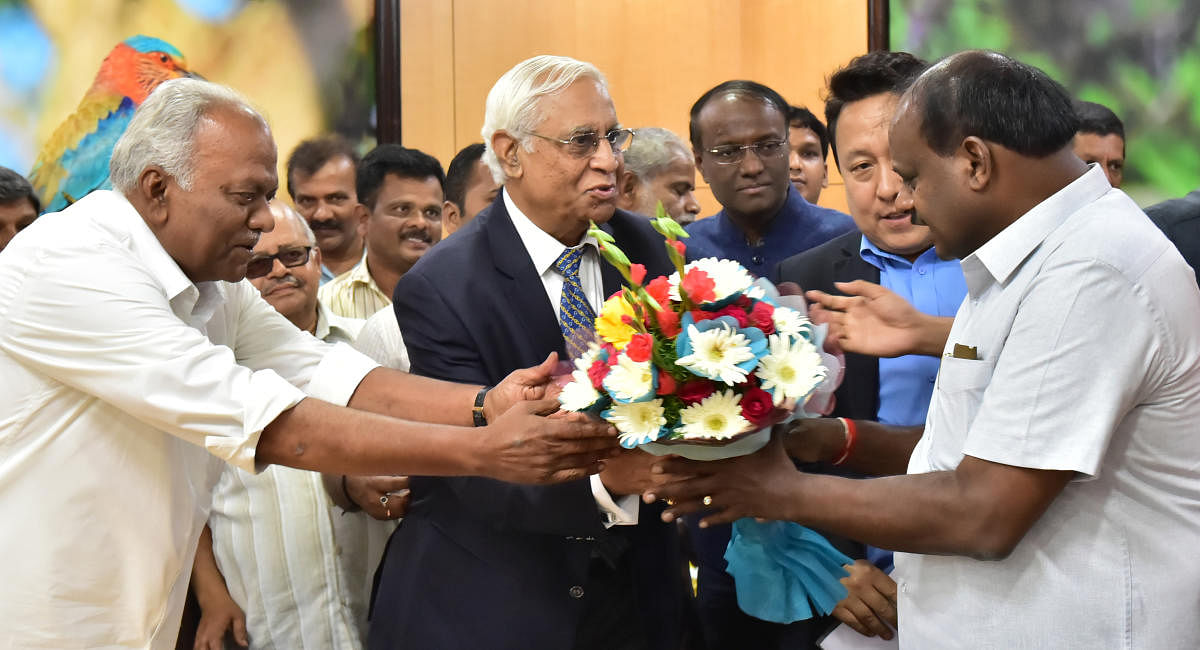
A proposal to restructure the administration of Bengaluru city by having five city corporations, comprising a whopping 400 wards, has paved the way for a public and political debate over the need for a new administrative structure to govern the city. Even though the report is yet to be accepted by the government, political parties have locked horns over the recommendations.
In conversation with Madhuri Rao, B S Patil, former chief secretary and chairperson of the three-member experts’ committee on restructuring of Bengaluru, explains the rationale behind the recommendations.
Why is it important to restructure BBMP?
We were surprised to know that Bengaluru is the only city in the world with a population of one crore and a one corporation jurisdiction. Many similar cities in the world have undergone changes with the introduction of new systems. We have loads of complaints from citizen and judicial bodies about administration. This system at the BBMP has been in place for over 40 years and needs a change at the organisational level, similar to any other change. It is in this backdrop that we have proposed the three-tier system of governance.
The current system in the BBMP has eight zones, under which the city is being administered. Do you think that the present system has failed? Wouldn’t it better for the government to empower the existing system?
The present system with eight zones appears to be unscientific. While some wards have a population of 20,000 people, some others have up to 1 lakh. The city in the centre is not growing, but the peripheral areas are growing at an alarming rate of 20 to 30%. Looking beyond the 2031 and 2041 census, we have suggested how this corporation requires 400 wards, so that each ward can have a uniform population of 20,000 people that help in better governance.
Now, there are 198 wards in the city. You have proposed 400 wards and each to have its own corporator. Isn’t this too big a number?
No. One has to understand that, today, the population of the ward varies and there is no consistency of population in every ward. If all the wards are uniform in size, the management will be easier. If a ward has a population of over one lakh, how would a corporator manage it?
There was a similar proposal to align all the service providers under the Bangalore Agenda Task Force (BATF) way back in 2000, and you were chief secretary then. You could have batted for the same rather than suggesting the new system.
We have taken the best points from most reports that were tabled earlier into consideration and drafted this report.
BMP became BBMP about a decade ago. Yet, the citizens are troubled with basic problems like potable water, drainage, roads and solid waste management. How will this new structure help the citizens of the city? Will they be able to get all the necessary services without any hassle?
We are proposing to include all service agencies such as the Bangalore Water Supply and Sewerage Board (BWSSB), Bangalore Electricity Supply Company (BESCOM), and Bangalore Development Authority (BDA) under one umbrella called the Greater Bengaluru Authority (GBA). No organisation will be dependent on the BBMP, and the civic body can work more efficiently.
The Opposition parties have been alleging that the city is being divided and this will be an insult to Nadaprabhu Kempegowda, the founder of the city. What is your view on this?
I have clarified on several occasions that the report is not about dividing, but decentralising the city administration. People must read the report and understand. If they have some suggestions, they are most welcome to communicate the same to the government. But without reading the report, just saying that it does not serve any purpose, is unfortunate.
How does adding more wards help in making things simple and transparent? Wouldn’t it be similar to the saying — too many cooks spoil the broth?
There will be greater transparency and accountability in the system and it will be visible in the ward. Creating more wards will not do harm because these are smaller units and the area of the city (800 sq km) will remain so. With smaller areas and more wards, more number of people will be participating in the democratic process. We have also explained that the garbage cannot go out of the jurisdiction and it has to be segregated within the area.
Would these recommendations make Bengaluru another Delhi?
It is important to understand that the Delhi model failed because they did not have a single agency to coordinate. Even the Government of India had suggested that Delhi had coordination issues. Therefore, we have a coordination committee, which will look after the various bodies.